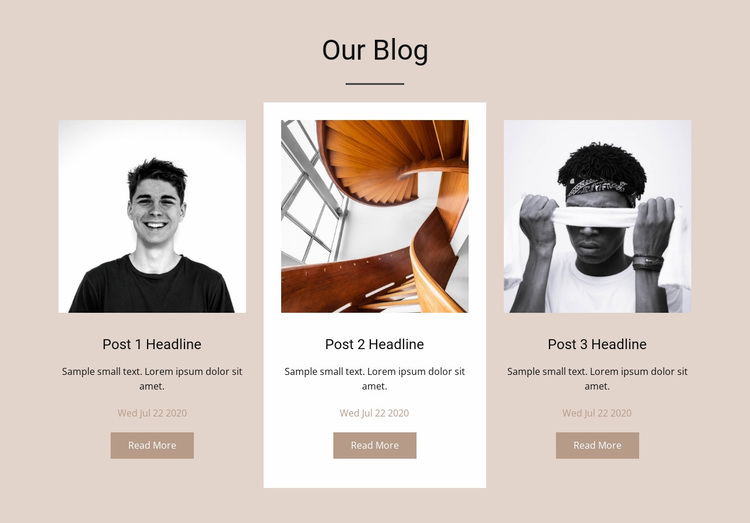Mobile-Friendly Website Design for Effortless Viewing on Any Device
Mobile-Friendly Website Design for Effortless Viewing on Any Device
Blog Article
Leading Tips for Producing an Impactful Internet Site Layout That Converts
To accomplish this, one have to consider a range of elements, including comprehending the target audience, prioritizing individual experience, and maximizing for mobile platforms. The tactical usage of compelling call-to-actions and a well-defined visual hierarchy plays a critical function in guiding users with their trip.

Understand Your Target Market
Understanding your target market is essential to effective site design, as it prepares for producing an interesting customer experience. Determining that your individuals are, including their demographics, choices, and habits, makes it possible for developers to tailor the site's web content, layout, and performance to fulfill specific needs.
Performing extensive marketing research is crucial in this process. Studies, interviews, and analytics can offer important understandings into user expectations and pain factors. By assembling this data, developers can develop customer identities that represent various segments of the target market, guaranteeing that design decisions are informed and appropriate.
Moreover, comprehending the target market aids in selecting appropriate layout aspects such as color design, typography, and imagery that resonate with customers. A web site that talks directly to its target market cultivates a sense of connection and count on, motivating longer check outs and greater conversion prices.
Ultimately, a user-centered technique to web site style not only improves individual complete satisfaction but additionally supports company purposes by driving interaction and commitment. By prioritizing the requirements and preferences of the target market, a web site can efficiently offer its function and accomplish preferred end results.
Prioritize Customer Experience
To enhance the total performance of a site, focusing on customer experience (UX) is crucial (Website Design). A properly designed UX guarantees that visitors can browse the website easily, locate information rapidly, and involve with content meaningfully. This results in enhanced user satisfaction and higher conversion prices
Begin by implementing instinctive navigation. Menus needs to be practically structured, enabling users to situate crucial areas of the site with minimal effort. Uniformity in layout components, such as color systems and fonts, cultivates knowledge, which is essential for keeping individual engagement.
Additionally, think about the filling rate of your web site. A delay of simply a few seconds can lead to significant drop-offs, as customers are less most likely to wait for a slow-loading page. Simplifying pictures and optimizing code can boost performance and retain site visitors.
By prioritizing individual experience, you not just produce a much more delightful environment for site visitors yet also reinforce your brand name's credibility. Eventually, an emphasis on UX is a financial investment in the long-term success of your internet site site.
Optimize for Mobile Devices
Optimizing for smart phones is essential in today's electronic landscape, where an enhancing number of individuals access internet sites through smart devices and tablet computers. A mobile-friendly layout not just enhances individual experience yet also plays a significant role in boosting internet search engine positions. To achieve this, it is important to embrace a responsive design that immediately readjusts to various display dimensions and alignments.

Packing rate is an additional crucial variable; mobile individuals are normally less individual and anticipate quick access to information. Maximize pictures and utilize browser caching to enhance performance. Lastly, examination your web site on several devices and screen resolutions to identify and remedy any kind of potential usability concerns. By focusing on mobile optimization, you make certain that your website remains competitive and successfully engages a broader target market.
Use Engaging Call-to-Actions
A web site's effectiveness often depends upon its capacity to direct visitors toward desired actions, making engaging call-to-actions (CTAs) important elements of design. CTAs serve as the essential factors that route users to engage with the website, whether that indicates buying, enrolling in a newsletter, or downloading a source.
To create efficient CTAs, clarity is paramount. Usage concise language that plainly communicates the action you want the individual to take.
Additionally, take into consideration using directional cues, such as arrows or pictures, to assist customers toward these buttons. By focusing on these elements, organizations can significantly improve customer interaction, driving conversions and inevitably achieving their web site's goals.
Concentrate On Visual Pecking Order
Effective site design counts greatly on a well-structured aesthetic power structure that guides customers with content seamlessly. By arranging components in a fashion that prioritizes details, developers can improve customer experience and promote decision-making. This entails utilizing dimension, color, comparison, and spacing strategically to accentuate one of the most important elements of a web page.
Making use of larger font styles for headings and subheadings establishes a clear distinction between various areas, allowing users to scan content easily. Furthermore, using see this here different colors for switches and calls-to-action can record customer attention and encourage interaction. Whitespace is one more essential component; it protects against clutter and makes it possible for customers to concentrate on crucial messages without distractions.
Images and graphics need to enhance the why not try these out text while additionally sticking to the recognized power structure, enhancing the overall message (Website Design). Consistency in style components, such as color schemes and typography, more reinforces the aesthetic pecking order, making navigation instinctive

Conclusion
To conclude, effective website style demands a comprehensive understanding of the target audience, prioritization of user experience, and mobile optimization. The strategic use engaging call-to-actions and a well-defined visual pecking order better boosts user engagement. By carrying out these principles, websites can attain higher conversion rates, ensuring that style components not just draw in visitors but additionally assist in seamless navigation and interaction. Ultimately, a well-executed website layout functions as an important component in driving individual activities and attaining service objectives.
Report this page